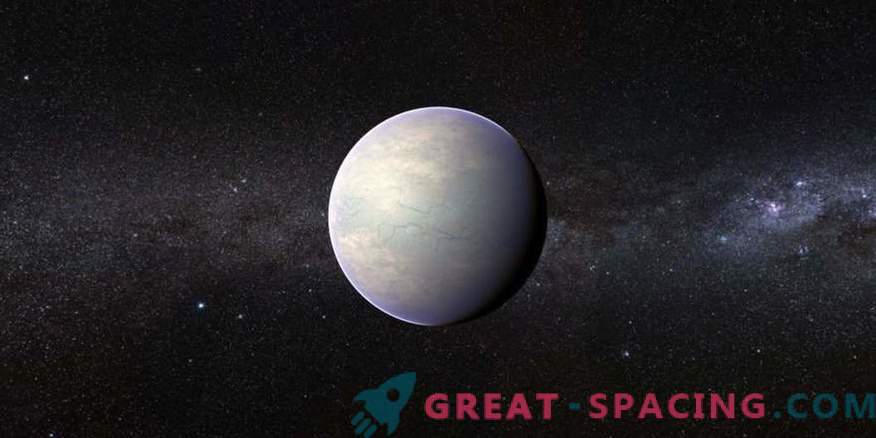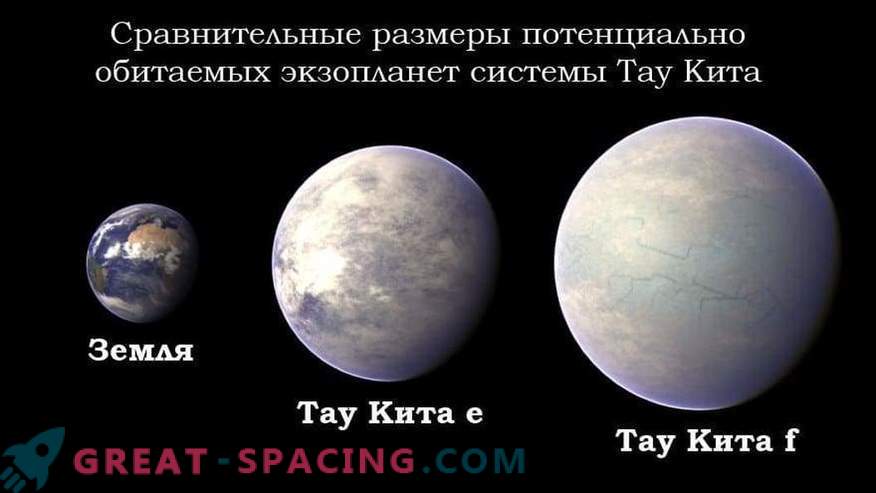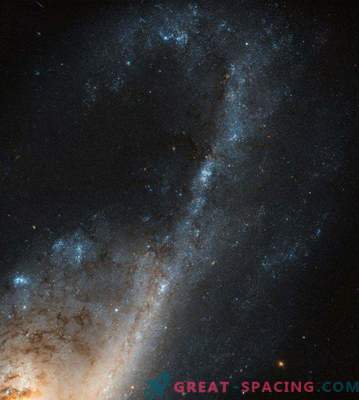
At a distance of 12 light-years from the solar system, the star of the solar type Tau Ceti rotates. This is one of the stars closest to us, which is slightly smaller in size and mass than the Sun (0.783 mass and 0.79 solar radius).
But researchers are interested not so much in a star, as in one of its planets. Back in 2012, as many as 5 worlds could be found in its orbit, whose orbital routes are close to circular ones. Increased attention is focused on the planet Tau Kitae, which has already been dubbed the Earth twin (the Earth's similarity index is high at 0.78, where the maximum is 1). She was found on December 12, 2012 using the radial velocity method.
Tau Kitae belongs to the type of super-earth and is 4.3 times greater than the earth massiveness. It is located at a distance of 0.55 a. e. from a native star, and spends about 168 days on one revolution around it. The world is located in the habitable zone on the territory of the inner edge (closer to the star than to the outer line of the system).

Tau Kita e receives 60% more light than our planet. This high heat will not allow highly developed creatures to survive, but it creates favorable conditions for thermophilic organisms, such as thermophiles. If the planet has a stable atmospheric layer, then the average temperature will be about 60-70 ° C. There is a risk that there is a greenhouse effect in the world, like on Venus. But this is not yet possible to confirm due to lack of data on the atmosphere.
Tau China e is considered a promising candidate for the search for life, since the distance between us is only 12 light years. However, modern technologies do not allow traveling at high speeds even to space vehicles.
For example, if we directed the Voyager-1 spacecraft toward exoplanets, then its journey spanned 212,000 years! But, if we use the advanced technology of the light sail (the movement of the apparatus is based on the effects of microwave and laser pulses), then the duration of the journey was reduced to 100 years.











































